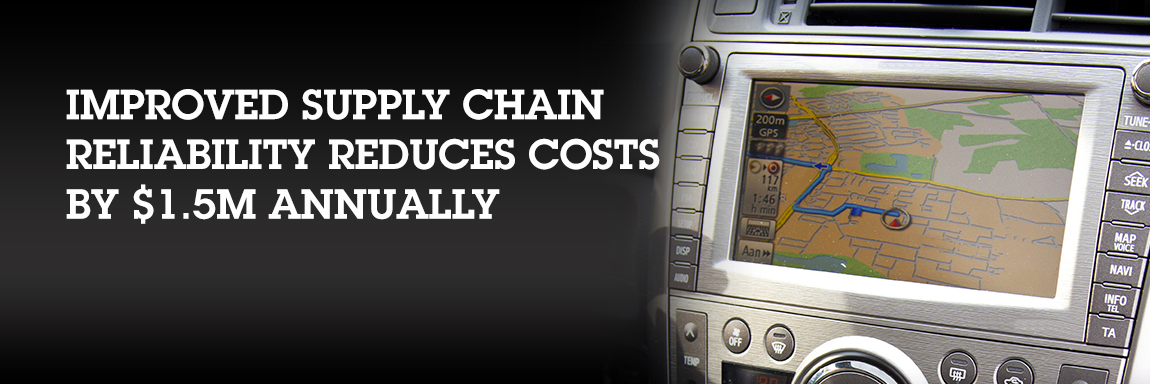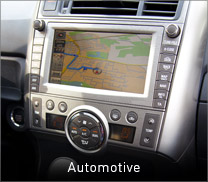
THE CHALLENGES
A global Tier-1 automotive company supplying infotainment electronics to some of the world’s leading automobile Original Equipment Manufacturers (OEM)s had identified some critical supply chain risks: 15 of their products contained high-risk components. These components were either going obsolete, only available from a single manufacturer, or could only be purchased from one source. Any gap in the supply of these components could halt the entire automotive assembly line. In an industry where high quality means adhering to strict regulatory standards, any component change would also involve product validations.
The company realized they needed a global EMS partner with strong knowledge of automotive regulatory certifications to help create a flexible, highly-reliable supply chain, while reducing costs. They chose Sanmina.
WHY SANMINA
Sanmina’s automotive engineers have over 20 years of experience in the automotive industry, improving supply chain risks including component selection and qualification. Our experts also have deep knowledge of the rigorous requirements needed to meet automotive regulatory standards, such as the IATF 16949, Automotive Electronic Council (AEC), Robustness Validation and the Part Production Approval Process (PPAP).
SOLUTION: $1.5M (USD) Cost Reduction
Using Sanmina’s proprietary supply chain risk analysis tool, our highly-skilled automotive component engineers provided cost-effective, reliable alternatives to 45 high-risk components. As a result, the company achieved a cost savings of $1.5M annually. Our supply chain risk analysis reclassified 25 high risk and 20 medium risk components into low risk categories – significantly improving the company’s supply chain reliability and flexibility.
APPROACH: An Effective Supply Chain Risk Assessment Tool
Based on years of experience, Sanmina already had an effective, proprietary algorithm in place to perform an initial risk assessment. The tool classified the level of risk using five types of criteria:
- Multi or Single Sourced: Components sourced from a single manufacturer put the supply chain at a higher risk. Preferred Suppliers or Customer Directed Suppliers: Preferred suppliers have built a long-standing partnership with Sanmina, and have consistently met delivery and quality goals
- Life-Cycle Status: The component can be in many stages of its life-cycle – from the growth phase to the final stages of phase-out and obsolescence. A component currently produced in high volumes is considered lower risk.
- Environmental & Regulatory Standards: Components vary in the degree to which they meet certain environmental and regulatory standards, such as the RoHS Compliance. Low-risk components meet current or newer standards.
- Length of Lead-Time: Components are categorized based on short, medium or long lead times and allocation status. Parts with shorter lead times create a supply chain that can more easily adapt to changing customer demands
To reduce supply chain risk and cost, Sanmina delivered a list of cost-effective, reliable substitutions, which included a detailed design impact assessment and final risk analysis. Alternative components identified were:
- Electrically and mechanically, pin-to-pin compatible, with minimal design changes. In cases where design changes were necessary, our component engineers offered alternatives, optimizing cost and supply chain reliability.
- Within the delta qualification specifications. Engineers carefully assessed and compared the technical requirements for each component and chose component alternatives to minimize re-validation and re-qualification activity.
- Validated for supply chain, function and reliability.
By leveraging both Sanmina’s experience in the automotive industry, as well as our global supply chain management expertise, a more robust and flexible supply chain was put in place – helping the company save $1.5M per year.




